The BTC ETF opens the door for many new buyers to allocate Bitcoin in their portfolios. The impact of the ETH ETF is less clear.
When the Blackrock ETF application was filed, I was verbally bullish on Bitcoin at $25k, and since then, it has returned 2.6x and ETH has returned 2.1x. Since the bottom of the cycle, BTC has returned 4.0x and ETH has returned 4.0x. So, how much upside can an ETH ETF offer? Unless Ethereum develops a compelling path to improve its economics, I won't raise too many objections.
Andrew Kang: BlackRock's 99.8% approval for a Bitcoin spot ETF is the most positive news we've had in a while - could open the floodgates to billions in traffic, however, $BTC is only up 6% from the news, which feels like mispricing.
Fund flow analysis
In total, Bitcoin ETFs have amassed $50 billion in AUM — an impressive number. However, when you break down net inflows since launch by isolating pre-existing GBTC AUM and rotations, you have $14.5 billion in net inflows. However, these are not true inflows, as there are many delta-neutral flows to account for — namely, basis trades (selling futures, buying spot ETFs) and spot rotations. Based on CME data and analysis of ETF holders, I estimate that about $4.5 billion of net flows can be attributed to basis trades. ETF experts say large holders such as BlockOne are also converting spot BTC into ETFs — a rough estimate of $5 billion. Discounting these flows, we get $5 billion in true net buying from Bitcoin ETFs.
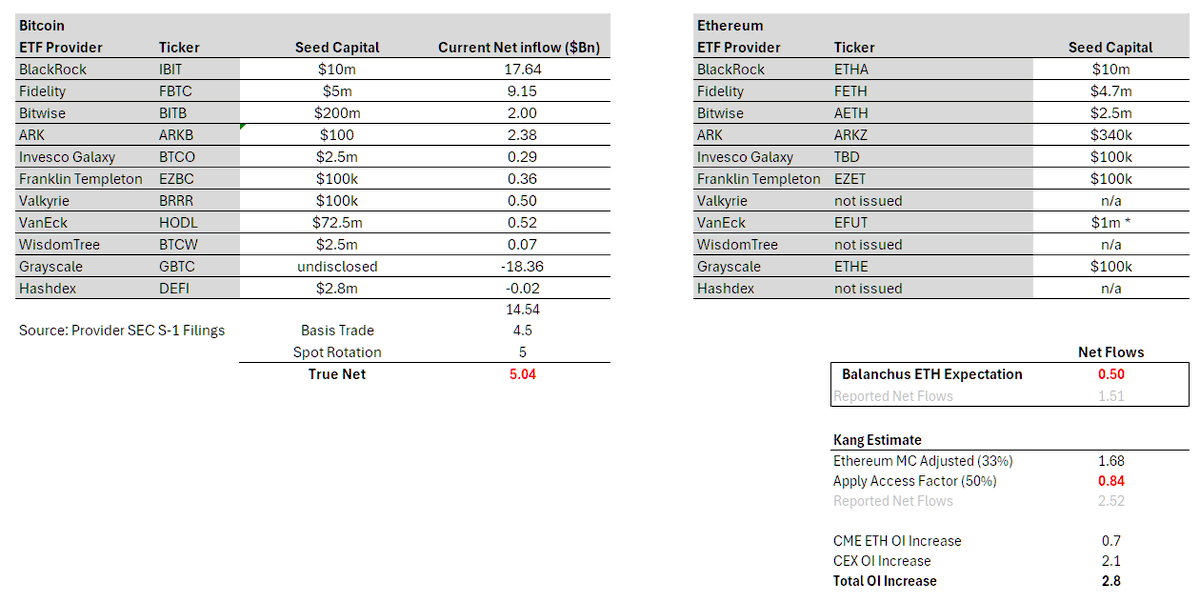
From this we can simply extrapolate to Ethereum. @EricBalchunas estimates ETH flow may be 10% of BTC. This makes true net buy flow of $0.5 billion over 6 months and reported net flow of $1.5 billion. Although Balchunas has downgraded his odds of approval, I believe his lack of interest/nitpicking in an ETH ETF is informative and reflects broader trading interest
Personally, my base case is 15%. Starting with $5 billion of real net in BTC, adjusting for ETH market cap (33% of BTC) and an access factor* of 0.5, we get $840 million of real net bought and $2.52 billion of net reported. There are some reasonable arguments that there is less ETHE onboarding than GBTC, so in the optimistic case, I would put $1.5 billion of real net and $4.5 billion of reported net. This would be around 30% of BTC flows.
In both cases, the true net buying was much lower than the derivative flows of the leading ETF ($2.4 billion), which excludes spot leading. This means that the ETFs were trading above pricing.
The channel factor adjusts for ETF-backed flows, and BTC clearly benefits from ETH given the different holder bases. For example, BTC is a macro asset, more attractive to institutions with access issues - macro funds, pensions, endowments, sovereign wealth funds. Whereas ETH is more of a technology asset, attracting VCs, Crpyto funds, technologists, retailers, etc., who are not restricted in accessing cryptocurrencies. The 50% is derived by comparing the CME OI to Market Cap ratio of ETH to BTC
Looking at CME data, ETH's OI was significantly lower than BTC's before the ETF launched. The OI was about 0.30% of supply, while BTC was 0.6% of supply. At first, I thought this was an "early" sign, but one could also argue that this masks a lack of interest in the ETH ETF from smart trading funds. Street traders trade a lot with BTC and they tend to have good information, so if they're not repeating it for ETH, then there must be a good reason and it could mean weak stream intelligence.
How $5 billion took BTC from $40,000 to $65,000
The short answer is, it doesn’t. There are many other buyers in the spot market. Bitcoin is an asset that is truly validated globally as a key portfolio asset and it has many structural risks - Saylor, Tether, Family Offices, HNWI Retail, etc. ETH also has some structural risks, but I believe the scale is smaller than BTC.
Remember, Bitcoin ownership was at $69,000/$1.2T+ BTC before ETFs existed. Market participants/institutions own a lot of spot crypto. Coinbase has $193B in custody, $100B of which is from their institutional program. In 2021, Bitgo reported $60B in AUC, and Binance custodyed over $100B. 6 months later, an ETF custodying 4% of the total Bitcoin supply is meaningful, but only part of the demand equation.
Long term $BTC demand flows I think are around $4-13bn+ this year.
One of the most common original sins of crypto investors/traders is underestimating the wealth/income/liquidity in the world and its spillover into crypto. We hear statistics about gold, stocks, real estate market cap so often that to many people these numbers can become noise. Many in the crypto industry are caught up in their own little crypto bubble, but the more you travel and meet other business owners, HNWIs, etc., the more you realize what an incredible amount of USD there is in the world and how much of that can go into $BTC /crypto. Let me put this into perspective with a crude demand measurement exercise.
The average household income in the US is 105k. There are 124 million households in the US, which means the total annual income of US individuals is $13 trillion. The US accounts for 25% of GDP, so the total global income is about $52 trillion.
The average global crypto ownership is 10%. In the US it is around 15% and in the UAE it is as high as 25-30%. Assuming crypto owners allocate only 1% of their income per year, that’s $52 billion per year buying BTC, or $150 million per day. In reality, this buying is not linear and there is a lot of variability from day to day based on seasonal variables. Keep in mind that this is an estimate of non-ETF/pre-ETF flows. People seem to forget that there was a huge and sustained demand for Bitcoin even before these ETFs were approved. How do you think Bitcoin became a trillion dollar asset and has been trending upwards for the past 10 years?
These estimates are quite conservative for several reasons. (1) You are likely to see allocations of more than 1%. True believers put in 50%+. Is the average allocation probably actually 3-5% on average? (2) Allocations from corporates, macro funds, pension funds, sovereign wealth funds, etc. are not included here and are probably of a similar order of magnitude.
What about Mt Gox? Celsius? USG sales? Miner emissions? This has been the bear thesis for many, but the reality is that when you measure buy flows - they dwarf all of these sell flows combined. The chart below shows that this sales is about $17 billion. Non-mining emissions are also not going to happen/clear up after this year. Traders/investors in this space always overemphasize what they can see. Open your eyes to the magnitude of flows that are not publicly stated.
Now add in the ETF inflows. Just the lower bound of the estimate covers the sell flow itself. But we've seen many days above the upper bound lately. We wouldn't be surprised to see us running at $100-200 million per day over the next month. Seriously, what's the bear thesis here?
Mainly respect for people like @cburniske but I still believe this ETF launch is not comparable to previous events like CME futures, Coinbase IPO etc and we won't spend less than 40k at any point. 50-60k in Feb, ATH in March.
Between MSTR and Tether you have billions in additional buying, but not only that you have positioned in the ETF. This is a fairly popular view that ETFs at the time were a news event/market top to sell. So billions of short to medium to long term momentum have been sold and need to be bought back (2x flow impact). On top of that we need to buy back shorts once ETF flows show significance. Open interest is actually down at the time of publication - looks crazy.
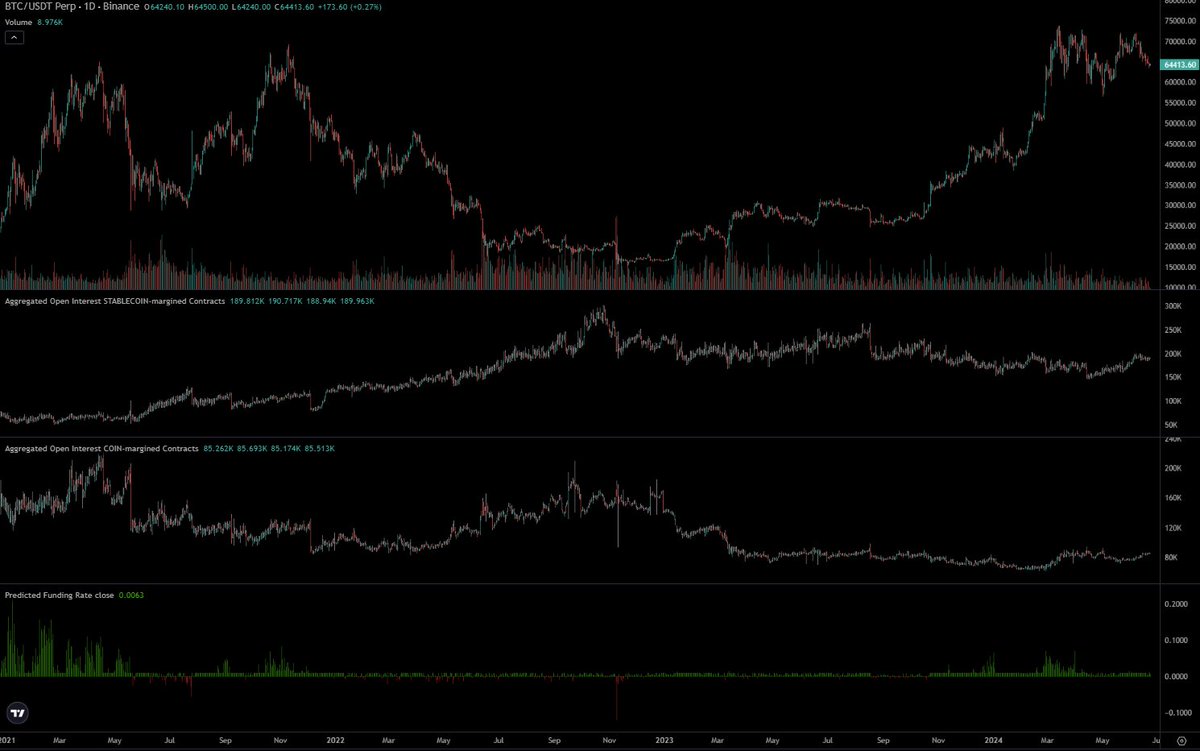
The ETH ETF is positioned very differently. ETH is 4x higher than BTC’s pre-launch low of 2.75x. Crypto native CEX OI increased by $2.1B, bringing OI close to ATH levels. Markets are (semi) efficient. Of course, many crypto natives who saw the success of the Bitcoin ETF expect the same from ETH and positioned accordingly.
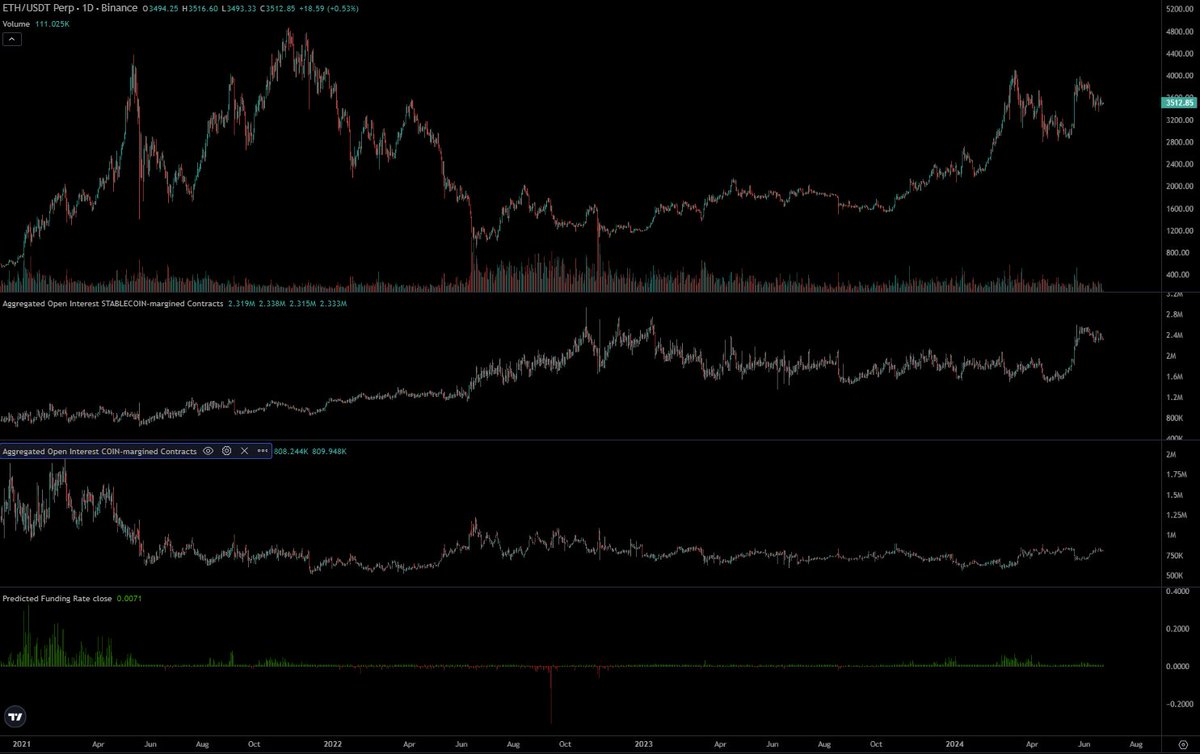
Personally, I think the expectations of crypto natives are too high and out of touch with the real preferences of tradfi allocators. It is natural that those who are deeply involved in the crypto space have a relatively high mind share and buy Ethereum. In reality, it is much less purchased as a key portfolio allocation for many large non-crypto native capital groups.
One of the most common pitches for Tradfi is Ethereum as a “technological asset”. The global computer, the Web3 app store, the decentralized financial settlement layer, etc. It’s a nice pitch and I’ve bought into it in previous cycles, but it’s a hard sell when you look at the actual numbers.
In the last cycle, you could point to the growth rate of fees and argue that DeFi and NFTs will create more fees, cash flow, etc. and make a compelling case that this is a tech investment through a lens similar to tech stocks. But the quantification of fees this cycle is counterproductive. Most charts show flat or negative growth. Ethereum is a cash machine, but with $1.5 billion in annualized revenue and a 300x P/E, a negative P/E after inflation, how can analysts justify this price to their dad’s family office or macro fund boss?
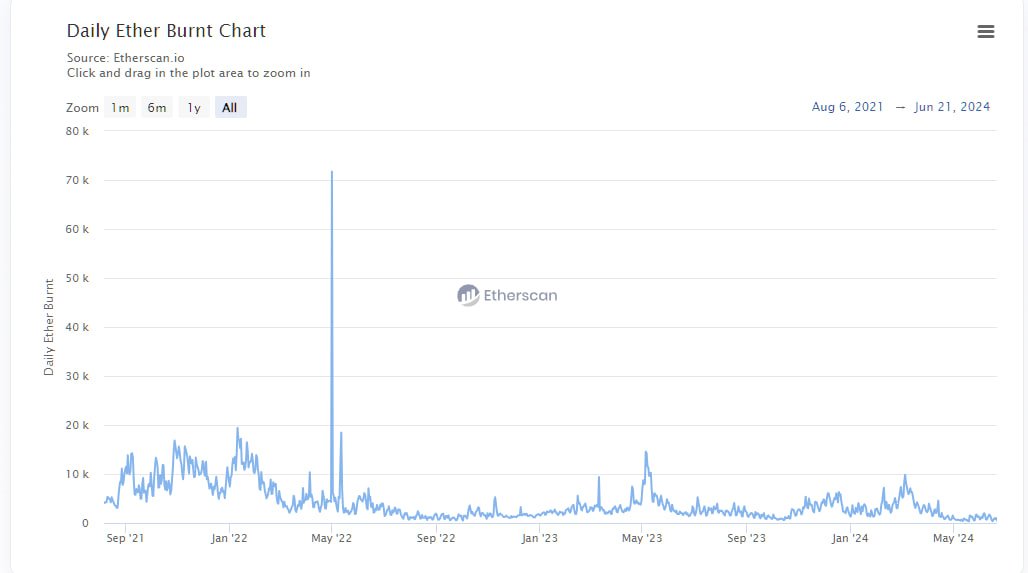
I even expect fugazi (Delta Neutral) flows to be lower in the first few weeks for two reasons. First, the approval was surprising and it will take much less time for issuers to attract large holders to convert their ETH to ETF form. The second is that since holders need to give up the yield on staking, farming or leveraging ETH as DeFi collateral, the conversion is less attractive. But note that the holding rate is only 25%.
Does this mean ETH will go to zero? Of course not, to the extent that it will be considered good value, it will be dragged down to some extent when BTC goes up in the future. Before the ETF is launched, I expect ETH to trade between $3,000 and $3,800. After the ETF is launched, my expectation is $2,400 to $3,000. However, if BTC goes to $100,000 by the end of Q4/Q1 of 2025, then this could drag ETH along to ATH, but ETHBTC will be lower. In the long term, there are some developments to look forward to, and you have to believe that Blackrock/Fink are doing a lot of work to put some financial rails on the blockchain and tokenize more assets. How much this will affect the value of ETH, and what the timeline is is uncertain.
I expect ETHBTC to continue trending downwards, with the ratio between 0.035 and 0.06 over the next year. Although our sample size is small, we do see ETHBTC making lower highs in each cycle, so this is not surprising.
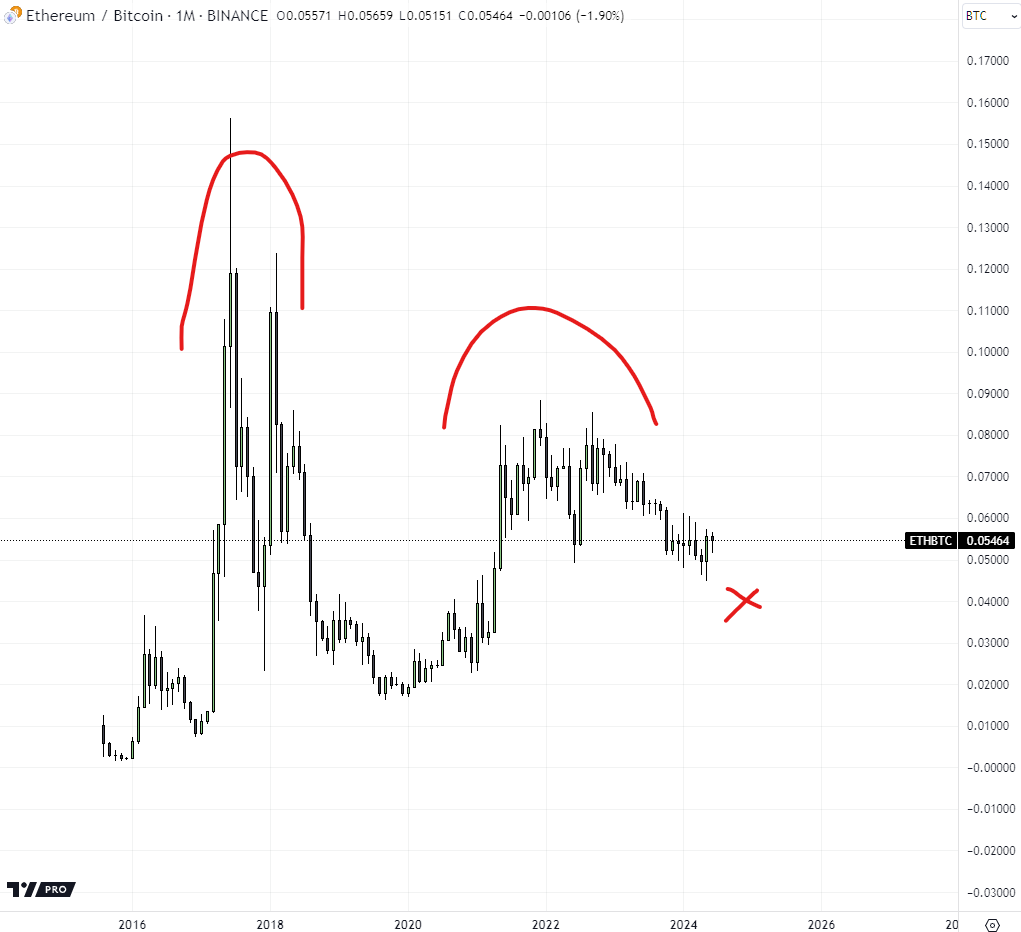
I will leave you with the only thing I can see that can save ETHBTC.
Thanks @GiganticRebirth and @Evan_ss6 for the discussion, despite our differing opinions.






